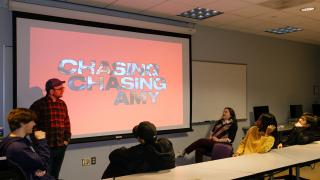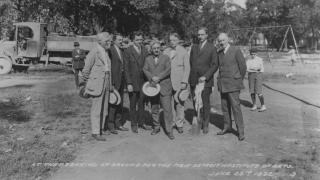
http://youtu.be/HbzM-ORHQUA
In the video above, Megan Moore, assistant professor of anthropology at UM-Dearborn, and her student, Joseph Stulock, share information about the research they are conducting on the effects of body mass on the human skeleton.
This research is a continuation of previous research by Moore that looked at changes in the skeleton as a result of body mass, especially obesity.
Previously, Moore used computer tomographic (CT) scans of the skeletal remains of 150 known modern individuals (from the William M. Bass Donated Skeletal Collection at the University of Tennessee) to create three-dimensional digital models of the femur (thigh bone). These models were then used to investigate shape changes relative to body weight and body mass. The biomechanics of obesity indicate changes in locomotive behaviors from normal weight to obese individuals during normal gait and sit-to-stand motions. Moore's previous research found changes in the shape of the femur in which the shaft became more broad toward the epiphyses (ends of the bones).
The current research intends to explore these changes in the humerus (upper arm bone), which, according to Moore, becomes load bearing in obese individuals during sit-to-stand behaviors. For his independent study project, Stulock has learned to create these 3-D bone models using the program Amira 5.4. The area of cross-sections is measured at the deltoid muscle attachment and at the midshaft of the humerus.





